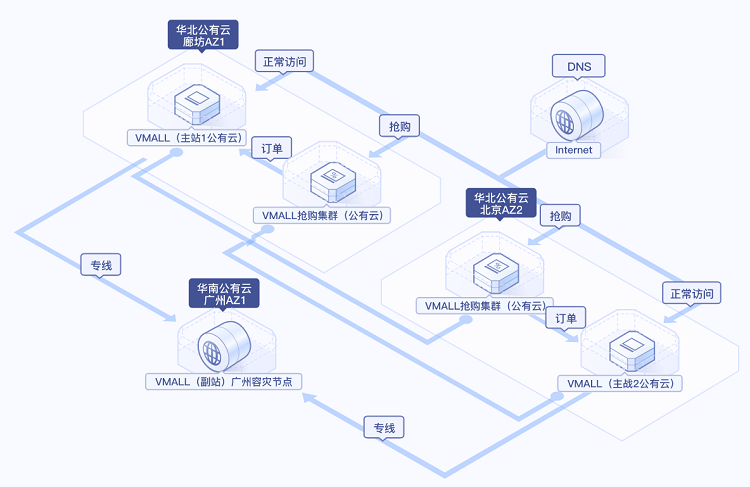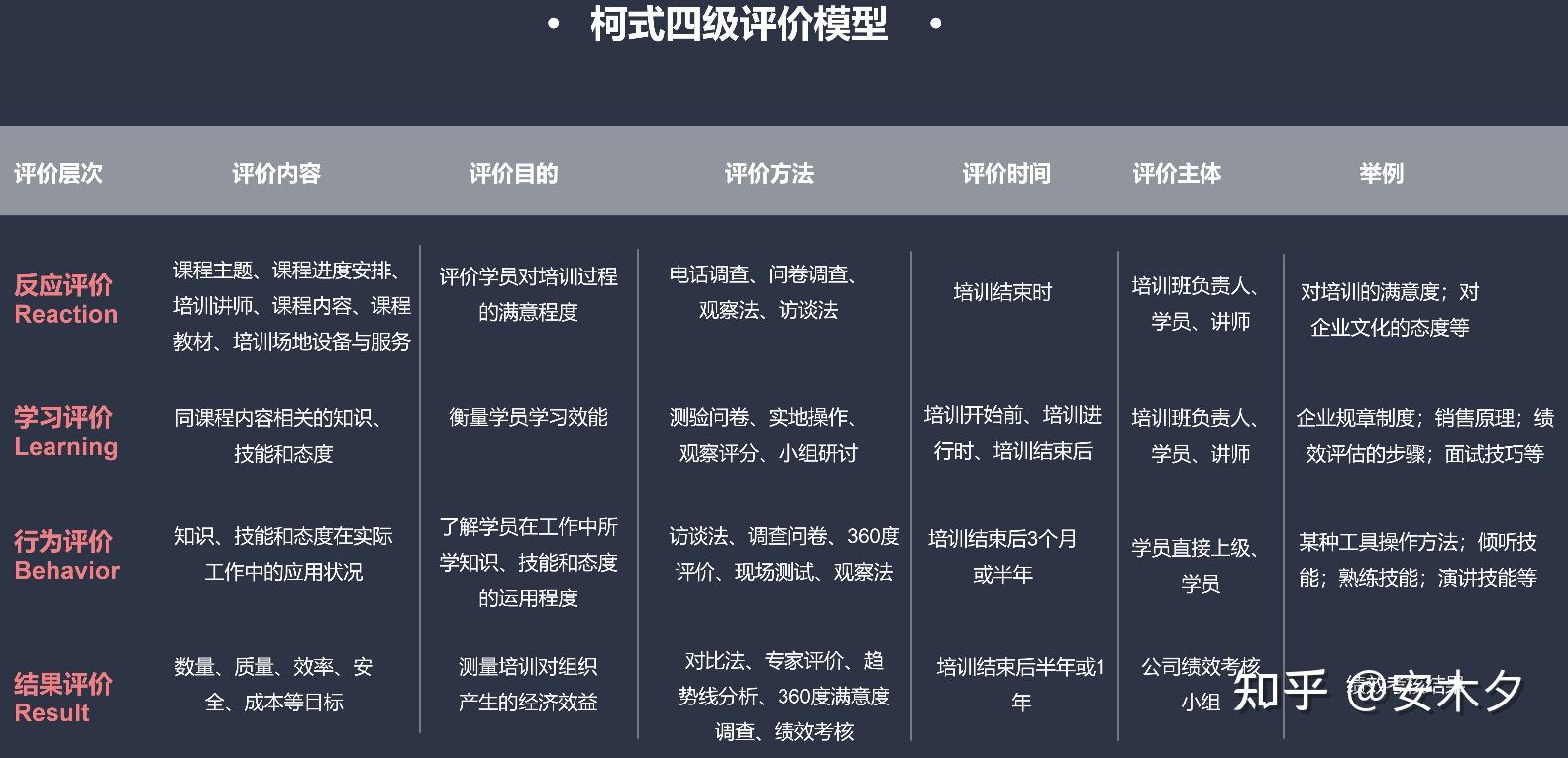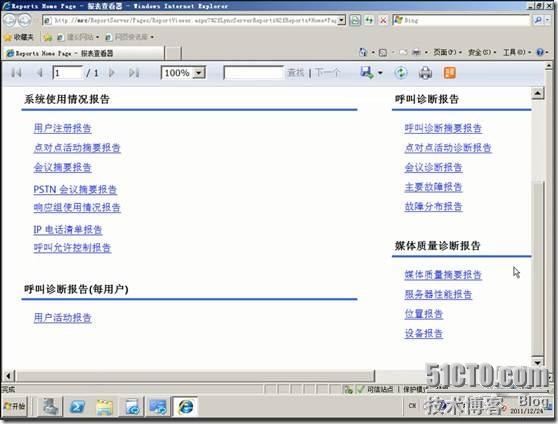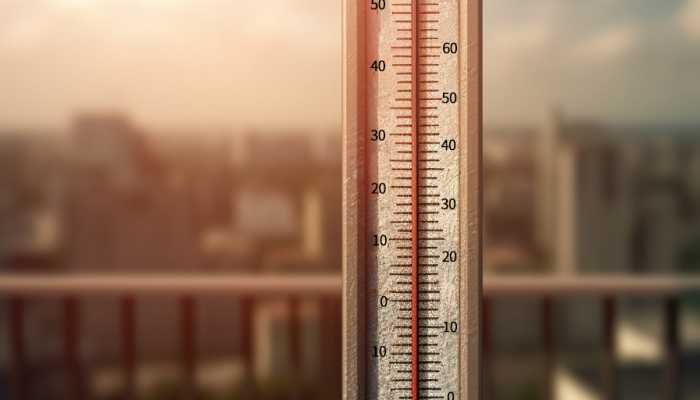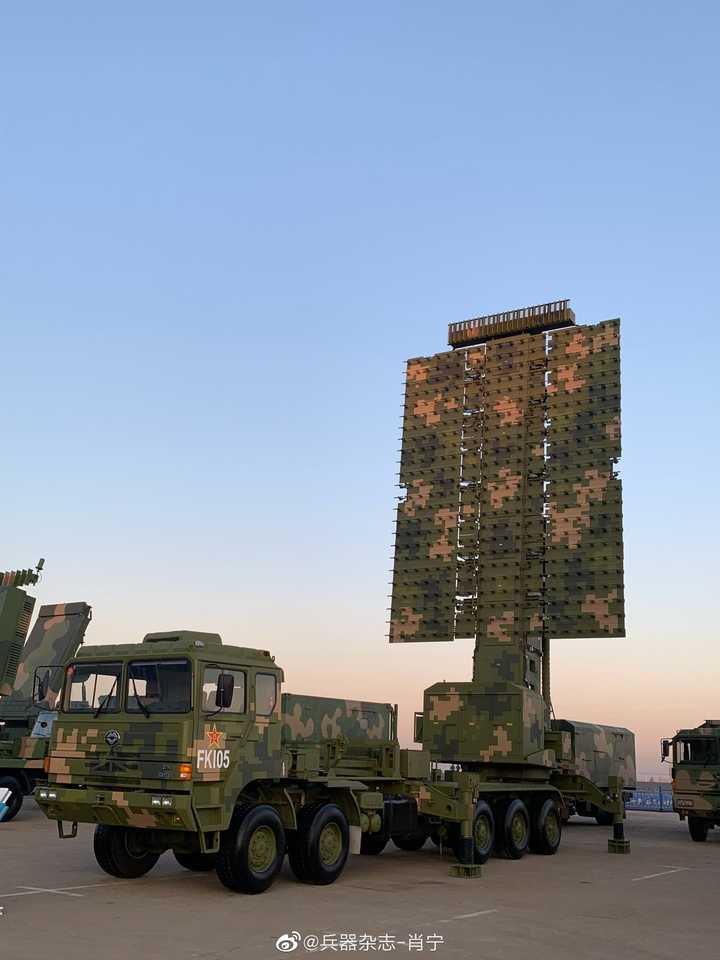Coursera | Andrew Ng (02-week3-3
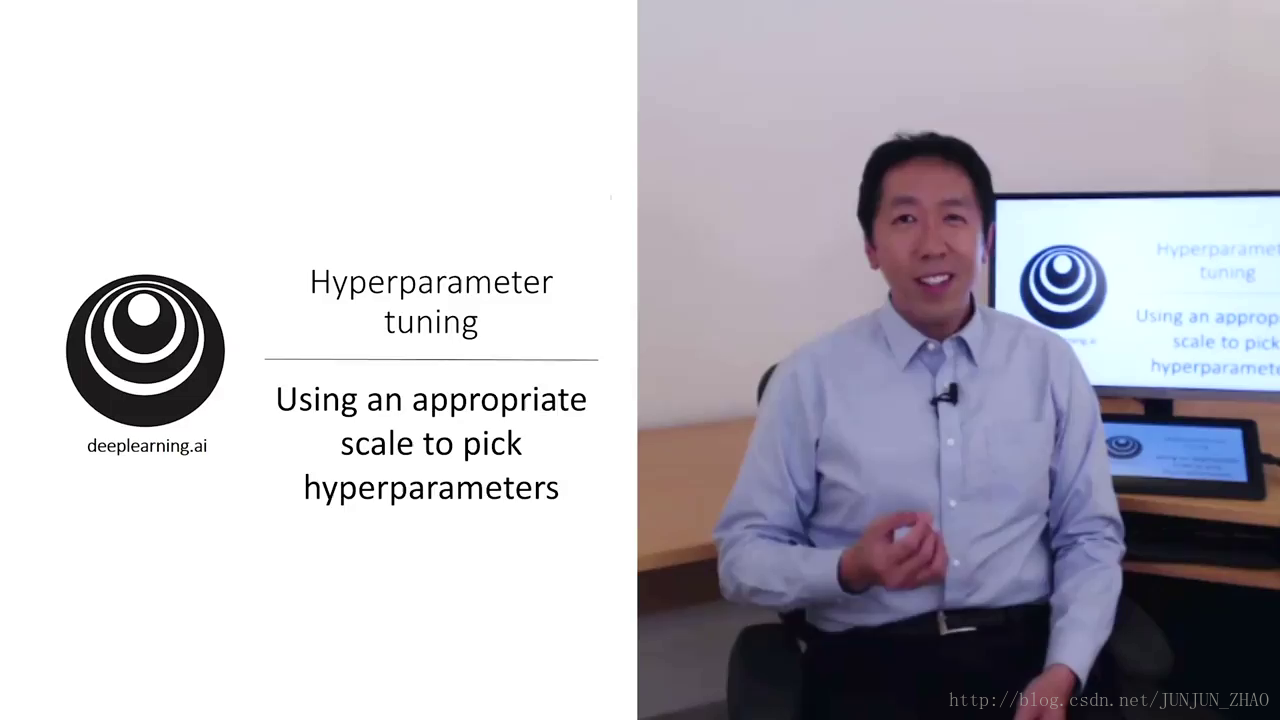
In the last video, you saw how at , over the range of ,can allow you to over the space of more 。But it turns out that at doesn’t mean at over the range of valid 。, it’s to pick the scale on which to the 。 In this video,I want to show you how to do that。Let’s say that you’re to the of units, n[l],for a given layer l。
And let’s say that you think a good range of is from 50 to 100 。In that case, if you look at the line from 50 to 100 ,maybe some at this line。There’s a way to for this 。Or if you’re to on the of in your ,we’re that L。Maybe you think the total of be 2 to 4。Then at , along 2, 3 and 4, might be 。
Or even using a grid , where you the 2, 3 and 4 might be 。So these were a where at over the range you’re , might be a thing to do。But this is not true for all 。
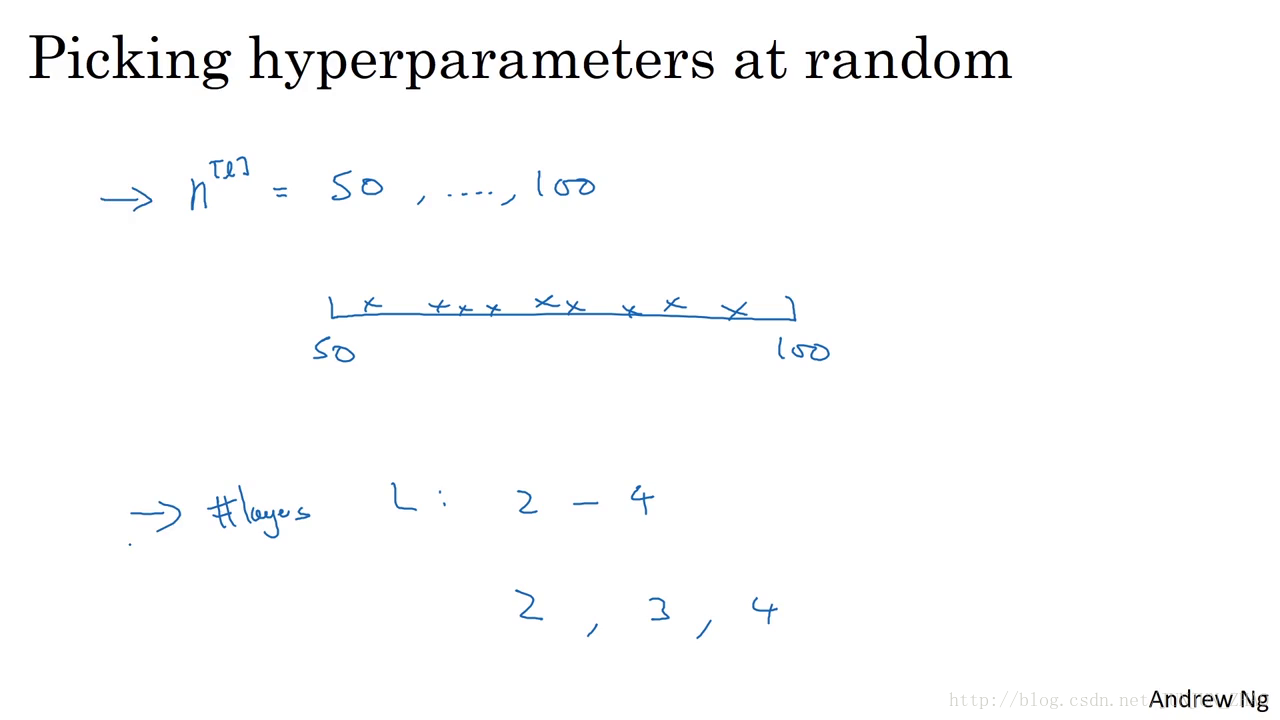
在上一个视频中 你已经看到了在超参数范围中,随机取值可以提升你的搜索效率,但随机取值并不是在有效值范围内的随机均匀取值,而是选择合适的标尺,用于探究这些超参数这很重要,在这个视频中 我会教你怎么做,假设 你要选取隐藏单元的数量 n[l],对于给定层 1 而言,假设 你选择的取值范围是从 50 到 100 中某点,这种情况下 看到这条从 50 - 100 的数轴,你可以随机在其上取点,这是一个搜索特定超参数的很直观的方式,或者 如果你要选取神经网络的层数,我们称之为字母 L,你也许会选择层数为 2 到 4 中的某个值,接着 顺着 2 3 4 随机均匀取样才比较合理,你还可以应用网格搜索 你会觉得 2 3 4,这三个数值是合理的, 这是几个在你的考虑范围内随机均匀取值的例子,这些取值还蛮合理的,但这对某些超参数而言不适用。
Let’s look at .Say your for the alpha, the rate.And let’s say that you 0.0001 might be on the low end,or maybe it could be as high as 1.Now if you draw the line from 0.0001 to 1,and at over this line.Well about 90% of the you would be 0.1 and 1.So you’re using 90% of the to 0.1 and 1, and only 10% of the to 0.0001 and 0.1.So that doesn’t seem right., it seems more to for on a log scale.Where of using a scale,you’d have 0.0001 here,and then 0.001, 0.01, 0.1, and then 1.And you , at , on this type of scale.Now you have more to 0.0001 and 0.001,and 0.001 and 0.01, and so on.
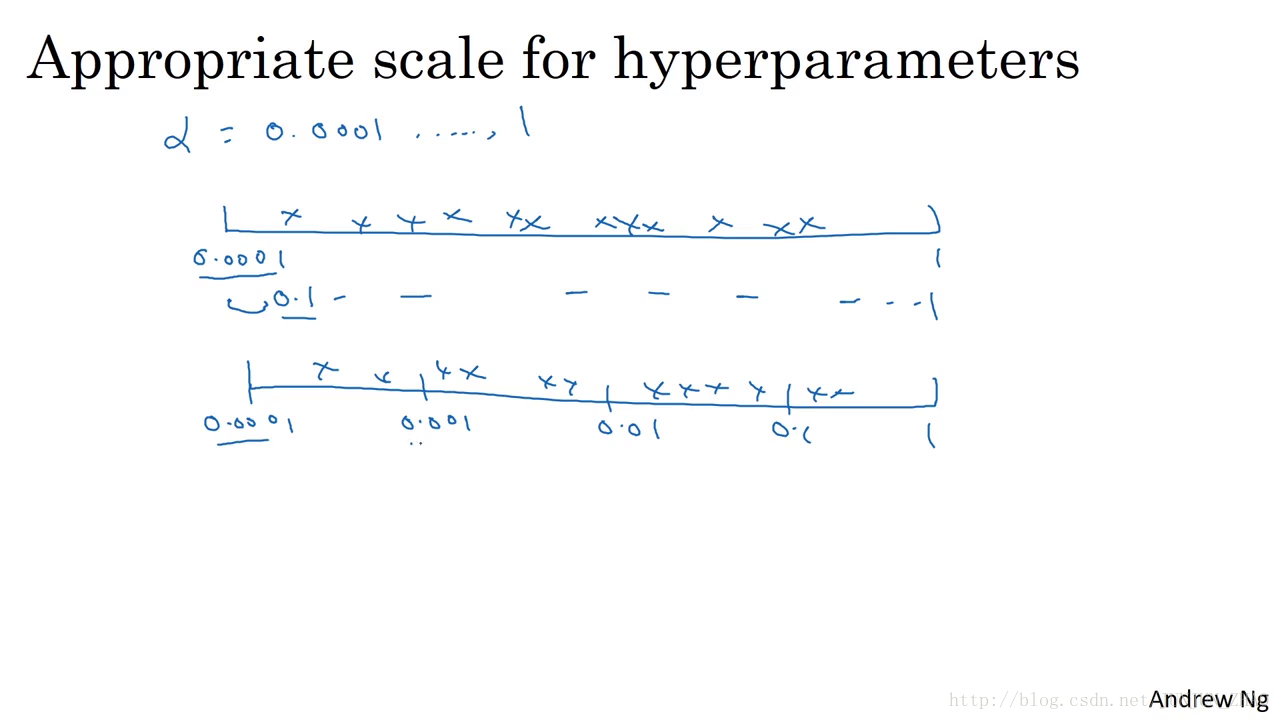
看看这个例子,假设你在搜索超参数 α α 学习速率,假设你怀疑其值最小是 0.0001 ,或最大是 1,如果你画一条从 0.0001 到 1 的数轴,沿其随机均匀取值,那 90% 的数值将会落在 0.1 到 1 之间,结果就是 在 0.1 到 1 之间 应用了 90% 的资源,而在 0.0001 到 0.1 之间 只有 10%的搜索资源,这看上去不太对,反而 用对数标尺搜索超参数的方式会更合理,因此这里不使用线性轴,分别依次取 0.0001 0.001 0.01 1,在对数轴上均匀随机取点,这样 在 0.0001 到 0.001 之间 就会有更多的搜索资源可用,还有在 0.001 到 0.01 之间等等。
So in , the way you this,is let r = -4 * np。。rand()。And then a value of alpha, would be alpha = 10 to the power of r。So after this first line, r will be a -4 and 0。And so alpha here will be 10 to the -4 and 10 to the 0。So 10 to the -4 is this left thing,this 10 to the -4。And 1 is 10 to the 0。In a more case,if you’re to 10 to the a, to 10 to the b, on the log scale。And in this , this is 10 to the a。
And you can out what a is by the log base 10 of 0。0001 ,which is going to tell you a is -4。And this value on the right,this is 10 to the b。And you can out what b is,by log base 10 of 1,which tells you b is equal to 0。So what you do, is then r , at , a and b。So in this case,r would be -4 and 0。And you can set alpha,on your value, as 10 to the r, okay?So just to recap, to on the log scale,you take the low value,take logs to out what is a。
Take the high value,take a log to out what is b。So now you’re to , from 10 to the a to the b, on a log scale。So you set r , at , a and b。And then you set the to be 10 to the r。So that’s how you on this scale。
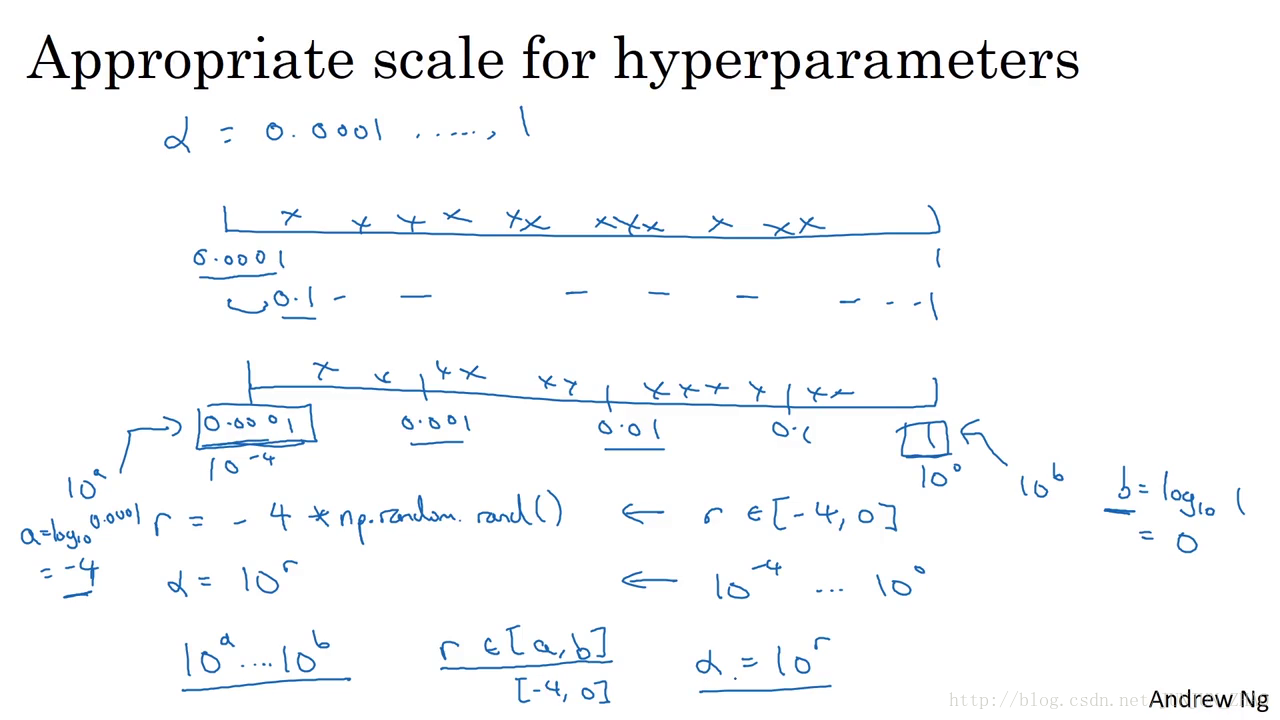
所以 在中 你可以这样做,使 r = -4 * np..rand(),然后 α α 随机取值 α=10r α = 10 r ,所以 第一行可以得出r∈[-4,0],那 α α 会在 10(−4) 10 ( − 4 ) 和 100 10 0 之间,所以最左边的数字是 10(−4) 10 ( − 4 ) ,最右边是 100 10 0 ,更常见的情况是,如果你在 10a 10 a 和 10b 10 b 之间取值,在此例中 这是 10a 10 a ,你可以通过 log0. l o g 10 0.0001 算出 a 的值,即 -4,在右边的值是 10b 10 b ,你可以算出b 的值, l o g 10 1 即 0,你要做的 就是在【a,b】区间随机均匀地给 r 取值,这个例子中 r∈[-4,0],然后你可以设置 α α 的值,基于随机取样的超参数值 α=10r α = 10 r ,所以 总结一下 在对数坐标上取值,取最小值的对数就得到 a 值,取最大值的对数就得到 b 值,所以现在你在对数轴上的 10a 10 a 到 10b 10 b 区间取值,在 a b 间随意均匀的选取 r 值,将超参数设置为 10r 10 r ,这就是在对数轴上取值的过程。
, one other case is the beta,used for 。So let’s say you that beta be 0。9 to 0。999 。Maybe this is the range of you want to over。So , that when ,using 0。9 is like over the last 10 。kind of like the of 10 days , using 0。999 is like over the last 1,000 。So to what we saw on the last slide,if you want to 0。
9 and 0。999 , it doesn’t make sense to on the scale, right?, at , 0。9 and 0。999 。So the best way to think about this is that we want to the range of for 1 minus beta,which is going to now range from 0。1 to 0。001。And so we’ll the beta, from 0。1,to maybe 0。1, to 0。001。So using the we have out on the slide,this is 10 to the -1,this is 10 to the -3。 on the slide,we had the small value on the left, large value on the right,but here we have 。
We have the large value on the left,and the small value on the right。So what you do, is you r at , from -3 to -1。And you set 1- beta = 10 to the r, and so beta = 1- 10 to the r。And this your value of your , on the scale。And this makes sense, in that this way,you spend as much the range 0。9 to 0。99,as you would 0。99 to 0。999 。
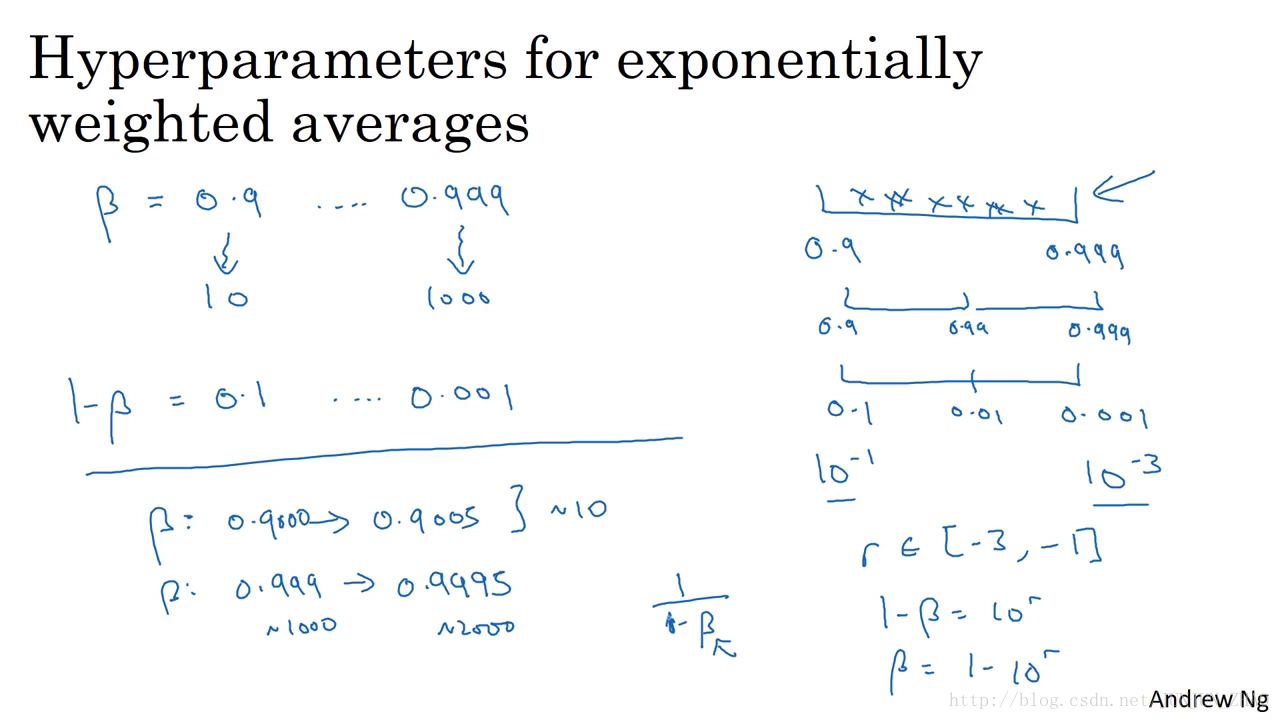
最后 另一个棘手的例子是给 β β 取值,用于计算指数的加权平均值,假设你认为 β β 是 0.9 到 0.999 之间的某个值,也许这就是你想搜索的范围,请记住这一点 当计算指数的加权平均值时,取 0.9 就像在 10 个值中计算平均值,有点类似于计算 10 天的温度平均值,而取 0.999 就是在 1000个值中取平均,所以 和上张幻灯片上的内容类似,如果你想在 0.9 到 0.999 区间搜索 那就不能用线性轴取值 对吧?,不要随机均匀在此区间取值,所以考虑这个问题最好的方法就是,我们要探究的是 1−β 1 − β ,此值在 0.1 到 0.001 区间内,所以我们会给 1−β 1 − β 取值,大概是从 0.1 到 0.001,应用之前幻灯片中介绍的方法,这是 10(−1) 10 ( − 1 ) 这是 10(−3) 10 ( − 3 ) ,值得注意的是 在之前的幻灯片里 我们把把最小值写在左边,最大值写在右边 但在这里 我们颠倒了大小,这里 左边的是最大值 右边的是最小值,所以你要做的就是在 [-3,-1] 里随机均匀的给 r 取值,你设定了 1−β=10r 1 − β = 10 r 所以 β=1−10r β = 1 − 10 r ,然后这就变成了你的超参数随机取值,在特定的选择范围内,希望用这种方式可以得到想要的结果,你在 0.9 到 0.99 区间探究的资源,和在 0.99 到 0.999 区间探究的一样多。
So if you want to study more for why we’ this, right, why is it such a bad idea to in a scale?It is that, when beta is close to 1,the of the you get ,even with very small to beta。So if beta goes from 0。9 to 0。9005,it’s no big deal,this is any in your 。But if beta goes from 0。999 to 0。999 5,this will have a huge on what your is doing, right?In both of these cases,it’s over 10 。
But here it’s gone from an the last 1,000 ,to now, the last 2,000 。And it’s that we have,1 / 1- beta,this is very to small in beta, when beta is close to 1。So what this whole does,is it you to more in the of when beta is close to 1。Or, ,when 1- beta is close to 0。So that you can be more in terms of how you the ,to the space of more 。
So I hope this helps you the right scale on which the 。In case you don’t end up the right on some ,don’t worry to much about it。Even if you on the scale,where sum of the scale would have been ,you might still get okay 。 if you use a to fine , so that in later ,you focus in more on the most range of to 。I hope this helps you in your 。
In the next video, I also want to share with you some of how to 。That I hope will make your a bit more 。

所以 如果你想研究更多正式的数学证据,关于为什么我们要这样做 为什么用线性轴取值不是个好方法,这是因为当 β β 接近 1 时,所得结果的灵敏度会变化 即使 β β 有微小的变化,如果 β β 在 0.9 到 0.9005 之间取值,无关紧要 你的结果几乎不会变化,但 β β 值如果在 0.999 到 0.9995 之间,这会对你的算法产生巨大影响 对吧?在这两种情况下 是根据大概 10 个值取平均,但这里它是指数的加权平均值,基于 1000 个值 现在是 2000 个值,因为这个公式 1/1−β) 1 / 1 − β ) ,当 β β 接近 1 时 β β 就会对细微的变化变得很敏感,所以 整个取值过程中,你需要更加密集地取值 在 β β 接近 1 的区间内,或者说 当 1−β 1 − β 接近于 0 时,这样 你就可以更加有效的分布取样点,更有效率的探究可能的结果,希望能帮助你选择合适的标尺,来给超参数取值,如果你没有在超参数选择中做出正确的标尺决定,别担心,即使你在均匀的标尺上取值,如果数值总量较多的话 你也会得到还不错的结果,尤其是应用从粗到细的搜索方法 在之后的迭代中,你还是会聚焦到有用的超参数取值的范围上,希望这会对你的超参数搜索有帮助,下一个视频中 我将会分享一些,关于如何组建搜索过程的思考,希望它能使你的工作更高效。
重点总结:
为超参数选择合适的范围
Scale均匀随机
在超参数选择的时候,一些超参数是在一个范围内进行均匀随机取值,如隐藏层神经元结点的个数、隐藏层的层数等。但是有一些超参数的选择做均匀随机取值是不合适的,这里需要按照一定的比例在不同的小范围内进行均匀随机取值,以学习率 α α 的选择为例,在0.001,…,1范围内进行选择:

如上图所示,如果在 0.001,…,1 的范围内进行进行均匀随机取值,则有90%的概率 选择范围在 0.1∼1 之间,而只有10%的概率才能选择到0.001∼0.1之间,显然是不合理的。
所以在选择的时候,在不同比例范围内进行均匀随机取值,如0.001∼0.001、0.001∼0.01、0.01∼0.1、0.1∼1 范围内选择。
r = -4 * np.random.rand() # r in [-4,0]
learning_rate = 10 ** r # 10^{r}一般的,如果在 10a∼10b 10 a ∼ 10 b 之间的范围内进行按比例的选择,则 r∈[a,b] r ∈ [ a , b ] , α=10r α = 10 r 。
同样,在使用指数加权平均的时候,超参数 β β 也需要用上面这种方向进行选择.
参考文献:
[1]. 大树先生.吴恩达深度学习课程 .ai 提炼笔记(2-3)– 超参数调试 和 Batch Norm
PS: 欢迎扫码关注公众号:「」!专注「深度学习」,「机器学习」,「人工智能」。以及 「早起」,「阅读」,「运动」,「英语 」「其他」不定期建群 打卡互助活动。
